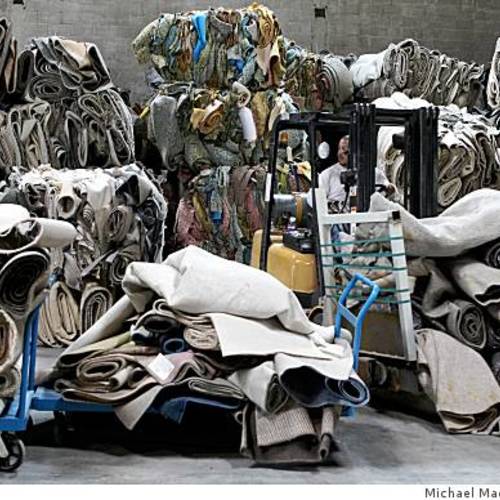
Image Credit: NY Times
The first New York Times Week in Review section of 2011 was all about sustainability. There was an article on love, two on food, one about high-tech gadgets, and one about budgets. That’s all well and good, but what about those buildings where we spend about 90% of our time? Maybe green building has become so overexposed in the media that the editors decided to give it a break. Who knows, but I am disappointed that neither residential nor commercial building sustainability was addressed anywhere in the section.
OK, I’m over it now
I’m done fussing, so I suppose it’s only appropriate to see what the Times has to say about sustainability. One major theme that runs through all the articles is something dear to my heart: changing behavior. The first article on food brings up the issue that Americans spend inordinate amounts of money and time on diet books and programs to take off weight gain from poor eating habits, when simply cooking real, fresh food would solve the problem faster and cheaper. The writer points out that on average, we watch 35 hours of TV a week (including many hours of cooking shows), but most of us don’t have enough time to cook regular meals. Instead we eat packaged, takeout, or restaurant meals, almost all of which are more costly and less healthy than home-cooked food. The article wraps up with some easy, inexpensive recipes that resemble much of my personal kitchen repertoire.
Invasive species or delicacy?
The other article on food discusses the idea of figuring out how to eat invasive fish and plant species as a method of controlling them. There have been rumblings about re-branding Asian carp as “Kentucky tuna” to make it sound more appealing to diners. The article goes on to discuss eating various garden weeds, deer, raccoons, rabbits, pigeons, and Canada geese as well. I once heard about someone from China who, after seeing the abundance of wild squirrels in the United States, commented that we must be a very well-fed population.
On to the important stuff
The article about love and marriage reminded me of a comment Michael Braungart, co-author of “Cradle to Cradle,” made in a lecture several years ago. He was questioning the use of the word “sustainable” as being too passive. He asked the audience: “If someone asked you how your marriage was going, would you want to answer that it was ‘sustainable,’ or would you want to say something more positive about it?”
The article on technology refers to the “two-year itch,” when cell phones are replaced with new, discounted models every time the contract renews—not to mention the millions of cameras, music players, and other small electronics upgraded each time a new model debuts. I am currently on my third GPS in less than five years, simply because if it were even practical to have a broken one repaired, a new one with better features would still cost less. The main point of this piece is the fact that recycling electronics is not simple, and manufacturers have neither incentives nor requirements to make their products more reusable or recyclable. Disposability is very profitable for manufacturers, so few of them are inclined to change the model.
The concept of cheap and disposable also applied to new homes for many years, although it was rarely stated quite so bluntly. Builders were making money selling big, inefficient homes; owners were making money selling them in a few years; and everyone was happy in this game of musical chairs, until the music stopped and lots of people were left with a poorly performing house that they couldn’t get their money out of.
What’s the solution to our disposable culture?
I am reminded of some suggestions that Braungart and William McDonough posed in “Cradle to Cradle,” including moving to a rental versus ownership model for many consumer products. They suggested that products like cars and clothes washers could be leased, then returned to manufacturers who would deconstruct them, reusing the raw materials for new, improved models that they would lease to the same customers. The current financial model doesn’t make this practical, as manufacturers are not responsible for the waste their products create, often making raw materials less expensive than recycled ones. They can just make and sell more products.
How about disposable homes?
The current financial model for home ownership (manipulated by tax laws and subsidized mortgage interest) provides a significant financial advantage to those who have the ability to own a home, while offering nothing to renters nor providing incentives to build better homes. What if builders were responsible for the total lifetime impact of their projects, including raw material extraction, waste produced, and energy use for the life of the house? They would have a huge incentive to build more efficient, more durable homes. What about if we include the health care of the occupants in the mix? Then the indoor environmental quality would play a part as well. And why not change the financial incentives to balance out ownership and renting? Give developers incentives to build high-performance rental properties, and give renters tax deductions equivalent to homeowners.
No, I am not a communist
I know that last paragraph will drive some readers crazy, making them think I am some pinko-commie radical who wants to turn our well-established society on its head. Think what you want, gentle readers; I am a capitalist, if only a modest one. I just see some big defects in the ways we do things. I don’t hold out much hope that I will see any of these changes in my lifetime, but I can dream, can’t I?
Weekly Newsletter
Get building science and energy efficiency advice, plus special offers, in your inbox.














3 Comments
Kudos to you for busting the NY Times!
Some provocative ideas (I wouldn't expect any less from you Carl) - and as someone who has been trying the rental (another word is share) model for cars under the Zipcar program for the last 4 years, I'm intrigued by some of the creative options your mention about housing. The first step is we have to quit selling the "American Dream" as only owning a big home with a big yard in the suburbs - and eliminating the financial bias that goes with it (which got us into the mess we're in now). It makes those of us that are living in a multifamily project or renting to feel somehow "less." New Urbanism has introduced a model that demonstrates higher density housing (with walkability and shared community spaces) can actually be healthier and more desirable for many Americans. And I agree that sustainability as a word is too clunky, abstract and uninspiring - I'd advocate for something that looks at what's good for the community as a whole (obviously, avoiding the word socialism).
The concept of Sustainability
The concept of Sustainability is something that should not need to be taught to people. It is a philosophy of living that dates back to the existence of the first humans that inhabited our planet. Initially through the onset of man in the time line of the Earth, life was instinctive and simple. People learned how to harvest naturally existing plants and the wildlife that occupied their areas. Food was hunted and produced on a daily basis. Shelter existed in caves and natural land formations until farther along in our evolution we began using portable structures also. With population density being low everything remained in a natural balance. Then came the Native peoples that inhabited different parts of the world. Our own Native Americans practiced sustainable living and never took more than they needed as did other indigenous peoples of the world. As the Industrial Revolution evolved things changed radically. Capitalism reigned and our society began its evolution to modern day. Somewhere along the line the ethics of protecting our living environment were replaced by greed and avarice. We rapidly became a society of the haves and have nots, bent on the accumulation of wealth and material goods. Resource extraction became commonplace and we were on our way to a wasteful disposable society, where it was "all about us". The idea of the "American Dream" mutated and became the situation that we face today. Greedy builders and developers backed by greedy banks and financial institutions, saturated the housing and commercial building landscape with oversized, energy inefficient housing and buildings. The size of ones house was a statement of personal wealth and material possessions. No one cared about the energy used to heat and cool these energy pigs. Commercial buildings took the same philosophy concentrating on size while neglecting indoor air quality, occupant health and safety, and energy efficiency. Corporate polluters waged a massive worldwide resource extraction campaign that has devastated our environment yet put billions of dollars in their greedy pockets. Many of our elected political representatives jumped on board and allowed them free reign to polluting the Earth because it lined their pockets also. When did we lose our connection to nature and our living environment? When did we stop caring about preserving the future for all living species, and made massive profits more important. One can probably point to many factors, periods of time and individual dates to answer this question. The concepts behind solar energy, wind energy , thermal storage, and building insulation are not new concepts. The technology has changed but the ideas of safe, healthy and sustainable shelter and living have not. Preserving the living environment for the future generations of all living species is not a difficult thing to understand and practice. Once we eliminate greed, self centered arrogance ( what I like to call the "I've got mine so screw everyone and everything else" attitude), from our social attitudes and conscience maybe we will actually be able to embrace and institute a truly sustainable future for our Earth and its inhabitants. Does it surprise you that the New York Times treated the idea like the Real Estate section? How many of their readers did they inspire to actually do something and change their habits? I guess we will find out.
Producer responsibility
Hi Carl - thanks for pointing me to your blogg - I look forward to learning more about this stuff.
Some of what you say regarding builders and their responsibility for houses should be pretty easy to apply - the model is there for automotive manufacturers - in Sweden manufacturers are responsible for ensuring the disassembly and recycling of their cars - they do this by paying into a fund a certain amount for each car sold (consumer would pay of course) which is then paid back to the consumer who finally returns it to a recycler. The better designed the car for disassembly, the less the cost of doing so and so the less the addition to the price and the more popular with "wreckers". Could this be applied to houses I wonder? Not for running costs and efficiency I suppose - but that's where full disclosure laws and "star ratings" can come in.
We need to work with capitalism - just like in Sweden (I have lived there, can you tell?) to make sure the markets operate to achieve efficient outcomes in the way they do best - but markets only operate well with full access to information on both sides of the price negotiation.
Log in or create an account to post a comment.
Sign up Log in